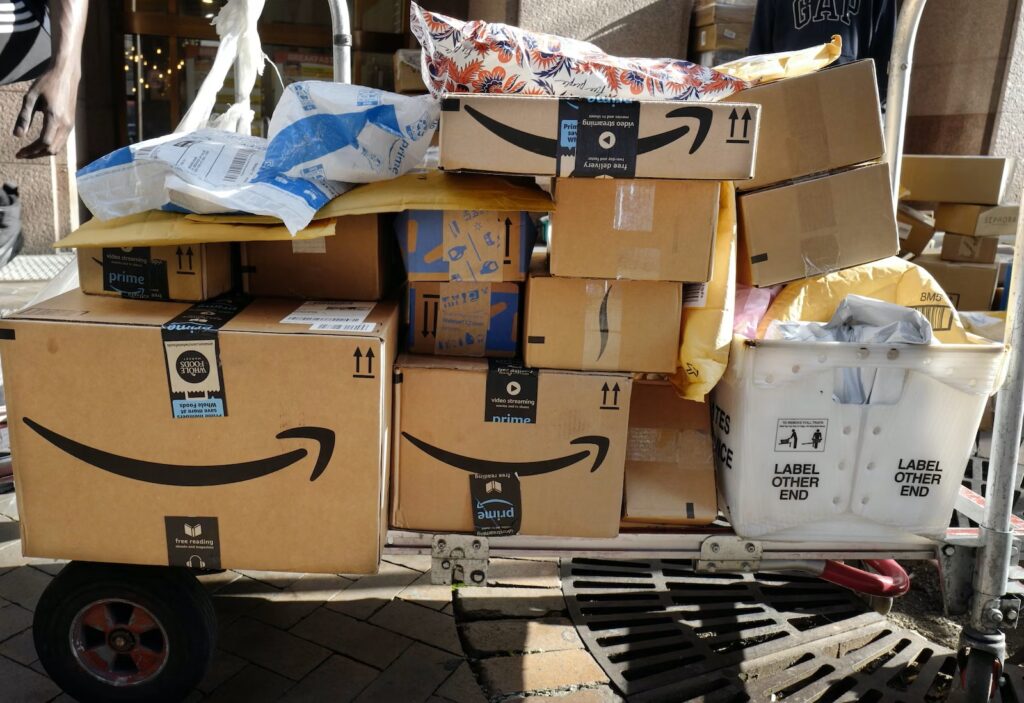E-Commerce Firms’ Response To Waste Needs To Pack A Punch
Apr 7, 2023 | Shalini Rai
The problem is many-layered and not considered enough of a 'problem' to merit a consolidated response. Among the more worrying aspects of e-commerce packaging is the loss of forest cover caused due to the use of wood pulp as the main raw material for making packaging cardboard (Image: AP File)
Last week, I decided to finally treat myself to an online purchase from a leading women’s wear brand. It had been pending for a while, partly due to laziness, partly due to schedule constraints. The package arrived, first layer made of plastic, with the shipping address and other details printed on it. Then came another layer of plastic which was wrapped around a beautiful pink cardboard box with tiny white polka dots on it. On opening the dainty box, I was treated to the sight of a piece of gossamer white paper inside which was my purchase — a pair of running slacks.
Whoa! All this made for a superb first impression and made me feel quite pampered and special. But, hidden in plain sight was a discomfiting reality — that of the high carbon footprint of e-commerce, as evinced by the use of so much and so unsustainable packaging material for just one buy under Rs 500.
A large chunk of packaging material currently in use in India is non-biodegradable. From plastic sturdy enough to withstand bumps, cuts and abrasions during transportation to delicate paper softly cushioning the prized object inside an impressive container usually made of high-quality cardboard — all this costs not just money but also involves a huge environmental impact.
According to a 2018 Down To Earth report, “One of the least studied and underreported generators of plastic and non-plastic waste are e-commerce companies. India’s e-commerce packaging industry was worth US $32 billion in 2015 and is expected to grow rapidly to about US $73 billion by 2020. Flipkart, for instance, does around 8 million shipments every month. But there are no estimates about the amount of e-commerce packaging or the disposal of waste, as no organisation has bothered to investigate the same. E-commerce packaging and the disposal of waste have huge environmental costs. At present, e-commerce packaging comes in multiple layers, which is made of plastic, paper, bubble wrap, air packets, tape and cardboard cartons. While most of these packaging materials are recyclable, India’s abysmal record indicates that a large portion of these materials will end up clogging our drains and landfills. The problem of excessive packaging has been exacerbated due to the growth of priority customer services that place a premium on ultra-fast delivery which do not allow for consolidated delivery of packages. This is leading to multiple individually packed deliveries, thus increasing the generation of waste.”
Evidently, the problem is many-layered and not considered enough of a ‘problem’ to merit a consolidated response. Among the more worrying aspects involving e-commerce packaging is the loss of forest cover caused due to the use of wood pulp as the main raw material for making packaging cardboard.
“For instance, around 165 billion packages are shipped in the US each year, and the cardboard used would roughly equate to more than 1 billion trees being chopped. Moreover, the toxic chemicals used in the production of these packaging materials are bound to affect human health as they enter our food cycle. Some of these chemicals are brominated flame retardants, polyvinyl chloride and Bisphenol A, which is an endocrine disruptor,” says a Down to Earth report. “Many companies use a possible carcinogen called Styrofoam, which is used as a common filler. Long-term exposure to even small quantities of Styrofoam can cause fatigue, nervousness and sleep disorders. Vinyl chloride, which is used to manufacture PVC, can severely impact the central nervous system causing headaches and dizziness. Long-term exposure to vinyl chloride can result in cancer and liver damage. Yet there are no studies to establish this link,” the report adds.
Much of the conundrum about e-commerce packaging and its adequate disposal revolves around the disposal of packaging material. According to the Solid Waste Management Rules, 2016, the responsibility of collection, recycling and disposal of plastic boxes, corrugated boxes and other packaging accoutrements lies with the producers. The collection, recycling and disposal of such waste must be in line with sound principles of environmental wellness. The Plastic Waste Management Rules, 2018, also place the primary responsibility of collection and recycling of plastic waste on brand owners who introduce the material in the market; importers and producers are equally responsible.
It might appear a mammoth task and one that companies focused on the short-term ramifications of their business decisions might not prioritise. But there are multiple and complex issues with the carbon footprint of e-commerce, transportation being right on top. We haven’t even touched upon it cursorily in this article. It warrants an independent, detailed look of its own — such is its impact and prevalence.
Meanwhile, a lot needs to be done and more voices need to be raised to warrant the attention that is needed to make e-commerce packaging material less of an environmental embarrassment and more guilt-free for consumers and generators alike.
